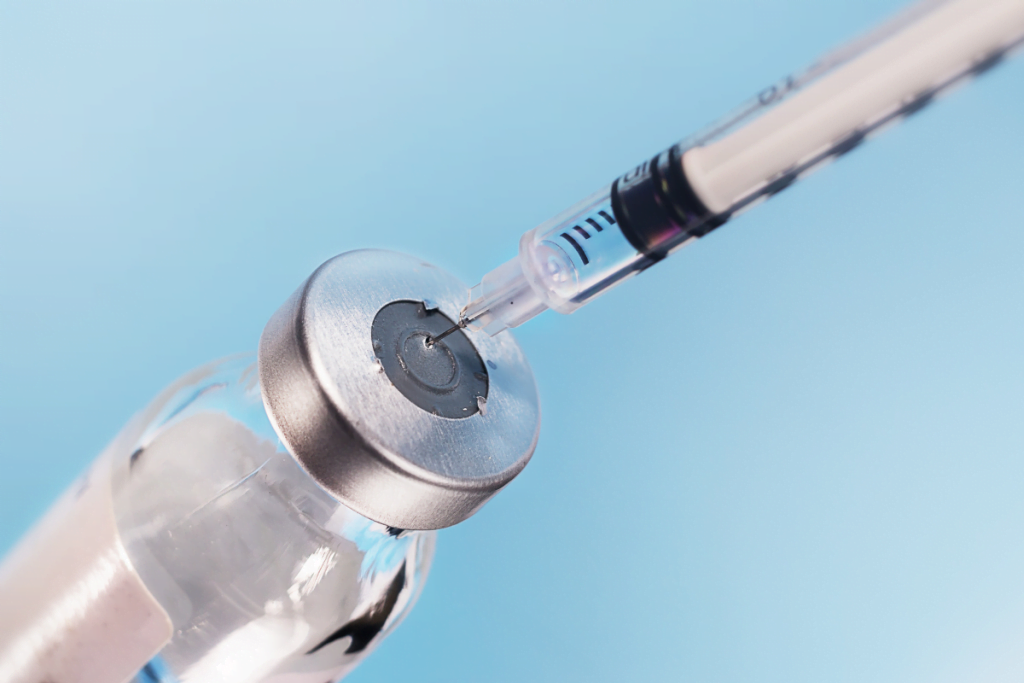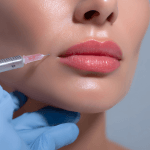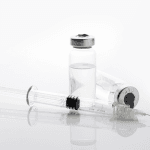Comfort strategy is part of filler quality, not an afterthought. In dermal filler procedures, clinicians often combine technique, pacing, and anesthesia choices to reduce distress without compromising assessment. When teams discuss lidocaine benefits, they usually mean predictable local numbness, improved patient tolerance, and fewer interruptions during injection. The operational side matters too, from documentation to product sourcing and staff training.
This guide frames lidocaine as a clinic workflow component. It outlines where lidocaine fits (topical, infiltrative, or pre-mixed in filler), what to monitor, and how to set up compliant handling. For broader context, many teams start with a hub view of Dermal Fillers Category items and then align anesthesia steps to their procedure mix.
Key Takeaways
- Match numbing method to anatomy and assessment needs.
- Understand how sodium-channel blockade affects sensation and feedback.
- Expect mainly local reactions; plan for rare systemic toxicity.
- Standardize documentation for anesthetic selection and lot tracking.
Lidocaine Benefits in Dermal Filler Procedures
Lidocaine is a local anesthetic used to reduce pain from needle or cannula passes. In aesthetic practice, it may be delivered as a topical product on intact skin, via local infiltration, or incorporated into certain hyaluronic acid (HA) filler presentations. The intended effect is localized numbness that can make a session more tolerable and can support steadier injection technique. In turn, this may help the team focus on placement, symmetry checks, and patient communication.
How lidocaine is introduced matters. Topicals can be convenient for surface discomfort but vary by site and skin barrier. Infiltration can provide deeper anesthesia but can also alter tissue feel and contour in the short term, which may affect visual endpoints. Fillers supplied with lidocaine can simplify setup and reduce extra steps, but they still require that staff understand labeling, contraindications, and adverse effect monitoring. Access to some supply channels is limited to licensed clinics and healthcare professionals.
Examples of HA fillers that may be presented with lidocaine include Juvederm Voluma With Lidocaine and Restylane Lyft With Lidocaine. Product selection should be based on approved labeling, your protocol, and patient-specific factors.
Mechanism, Sensory Effects, and Procedure Timing
At a high level, the lidocaine mechanism of action is blockade of voltage-gated sodium channels in neuronal membranes. This reduces nerve impulse initiation and conduction, which is why patients experience numbness and diminished pain signals. In practice, the perceived onset and depth depend on formulation, contact time, tissue vascularity, and whether the product is applied to intact skin or mucosa.
What the team should expect clinically
During filler work, anesthesia can change patient feedback. Reduced sharp pain may improve tolerance, yet it can also blunt protective sensation and complicate real-time symptom interpretation. That matters when you rely on patient-reported pain quality or sudden changes in sensation as part of your safety monitoring. Many teams integrate anesthesia with a broader safety program, including technique and observation steps described in Safety Protocols For Filler Injections.
Lidocaine benefits are strongest when the entire visit is designed around them. That includes sequencing (skin prep, topical dwell time, injection order), staffing (who applies, who documents), and patient education (expected numbness duration and skin care). Avoid treating numbing as a “one-off” add-on, because inconsistency increases delays and can create avoidable rework.
Formulation Options in Aesthetic Settings
Clinics often carry multiple lidocaine dosage forms because procedure sites vary. Common options include lidocaine cream, lidocaine gel, lidocaine ointment, and spray presentations, plus injectable lidocaine used for local infiltration. For completeness, teams sometimes ask about a lidocaine patch, even though patches are more commonly associated with focal neuropathic pain protocols rather than pre-injection facial anesthesia. Clear role definitions reduce misuse and improve documentation.
Because labeling differs by product and jurisdiction, treat names like lidocaine cream over the counter versus lidocaine cream prescription as workflow signals, not interchangeable items. Stocking decisions should be paired with an education note for staff: verify the exact concentration, maximum allowed application, and site restrictions on the product labeling. You may see products described informally as lidocaine cream 5, lidocaine gel 4, or lidocaine gel 5; confirm the specific product facts before use. The same caution applies to terms like lidocaine spray 10 or lidocaine spray 5, which can reflect different markets and formulations.
| Form | Where it may fit | Operational notes |
|---|---|---|
| Topical cream | Intact skin before injection | Standardize dwell time; avoid accidental spread to mucosa. |
| Gel | Mucosa-adjacent areas or specific surfaces | Labeling varies; some products are positioned for oral use. |
| Ointment | Localized skin anesthesia | Occlusive nature can alter grip and antisepsis steps. |
| Spray | Short-contact surface anesthesia | Control overspray; document site and total exposure considerations. |
| Local infiltration | Deeper anesthesia in selected areas | Can change tissue feel; may complicate endpoint assessment. |
| Filler with lidocaine | Streamlined injection workflow | Still requires adverse event monitoring and labeling review. |
Teams also field basic utilization questions. For example, what is lidocaine used for in this context? Primarily, it helps reduce procedure discomfort and may support procedural tolerance. And what is lidocaine ointment used for? It is typically used for localized skin anesthesia, but its occlusive base can influence skin prep and residue removal. When choosing between topicals, consider practicality: mess, timing, and how reliably your workflow achieves consistent coverage.
Side Effects, Toxicity Awareness, and Documentation Triggers
Most lidocaine side effects in clinic practice are local and self-limited, such as transient burning, stinging, redness, or numbness beyond the intended area. Topical lidocaine side effects can include contact dermatitis (irritant or allergic) and localized swelling. Teams should document the site, formulation, timing, and observed skin response, because “topical reaction” is otherwise hard to interpret later. Lidocaine side effects on skin can look similar to procedure-related irritation, so clear charting helps with follow-up and quality review.
Systemic toxicity is uncommon with appropriate use, but it is a high-impact event. Staff should know general early warning patterns and escalation pathways. When asked what is the first sign of lidocaine toxicity, references often cite early neurologic symptoms such as perioral numbness, tinnitus, metallic taste, dizziness, or agitation, which can progress if exposure continues. This is not a substitute for your emergency protocol; it is a reminder to align monitoring with your institutional policy and the product labeling.
Why it matters: Rare adverse events become manageable when the team recognizes patterns early.
Common pitfalls to prevent
- Stacking products
- Unclear total exposure
- Inconsistent application timing
- Missing allergy history
- Vague reaction documentation
Several specific scenarios deserve extra clarity in training. Lidocaine side effects dental can include prolonged oral numbness, accidental biting, or altered swallowing sensation when oral mucosa is exposed. Lidocaine spray side effects may be more likely when overspray reaches unintended mucosal surfaces. Lidocaine patch side effects are often localized skin irritation under the adhesive, which is operationally different from transient injection-site erythema.
Clinicians also ask how long do lidocaine injection side effects last. The honest operational answer is that it varies by site, total exposure, and product. Your charting should distinguish expected numbness from unexpected symptoms (persistent tingling, rash, or neurologic complaints). Encourage patients to report new or worsening symptoms, and route those reports through your usual clinical triage process.
Clinic Workflow: Standardizing Numbing for Filler Visits
Consistency reduces errors. A standardized numbing pathway should specify who selects the anesthetic, who applies it, how timing is tracked, and what gets documented. This is especially important when staff rotate between rooms, or when a practice uses both topical agents and fillers that contain lidocaine. For post-visit reinforcement that complements your in-clinic instructions, consider aligning language with Post-Treatment Care Essentials.
Procurement and compliance also sit inside the same workflow. Practices benefit from maintaining a simple record of product name, lot number, and expiration date for both fillers and anesthetics, in addition to the clinical note. Many suppliers serving the medical trade verify brand authenticity through vetted distributor channels. That upstream rigor supports downstream traceability when questions arise.
Quick tip: Add a single “anesthesia block” to templates for site, product, timing, and reaction.
Checklist: what to standardize in your protocol
- Product selection criteria
- Application timing method
- Site mapping language
- Lot and expiry capture
- Allergy and prior reactions
- Monitoring and escalation steps
- Patient-facing aftercare wording
If your team uses topical products frequently, it helps to maintain a shared reference page in your policy binder. Educational overviews like Topical Anesthetic Cream Guide and EMLA Cream Guide can support staff orientation, but always defer to your local protocol and the specific product labeling in use.
Choosing Between Lidocaine-Containing Fillers and Separate Anesthesia
Many teams evaluate whether a filler presentation that includes lidocaine is operationally preferable to separate numbing. Lidocaine benefits in this comparison are often about workflow simplicity: fewer products to prepare, fewer variables to document, and less reliance on topical dwell time. However, the decision should not be framed as “better” in all cases. It is a fit assessment that balances procedure goals, patient history, and your clinic’s monitoring habits.
Use a short decision framework that stays within labeling and policy boundaries:
- Assessment needs
- Procedure site sensitivity
- Workflow complexity
- Documentation burden
To keep teams aligned, some clinics add a product education module for each filler family they stock. Comparative reading can help standardize terminology across staff, such as Restylane Vs Juvederm and Revanesse Vs Juvederm. If you carry multiple lidocaine-included options, you may also see references like Revolax Deep With Lidocaine in catalog planning discussions.
Finally, keep sourcing and receiving steps consistent with your compliance program. Some practices prefer suppliers with US distribution and clear documentation norms for licensed accounts.
Authoritative Sources
For definitive requirements and safety language, use regulators and official labeling as your primary references. The links below support general safety concepts and terminology; always confirm the exact product label you are using.
- FDA overview of dermal (soft tissue) fillers
- FDA caution on topical anesthetic use
- MedlinePlus summary for topical lidocaine
Further reading within your organization can focus on harmonizing numbing steps with injection safety, aftercare, and incident reporting. For ongoing updates and clinical context, browse the Dermal Fillers Editorial Hub.
This content is for informational purposes only and is not a substitute for professional medical advice.






